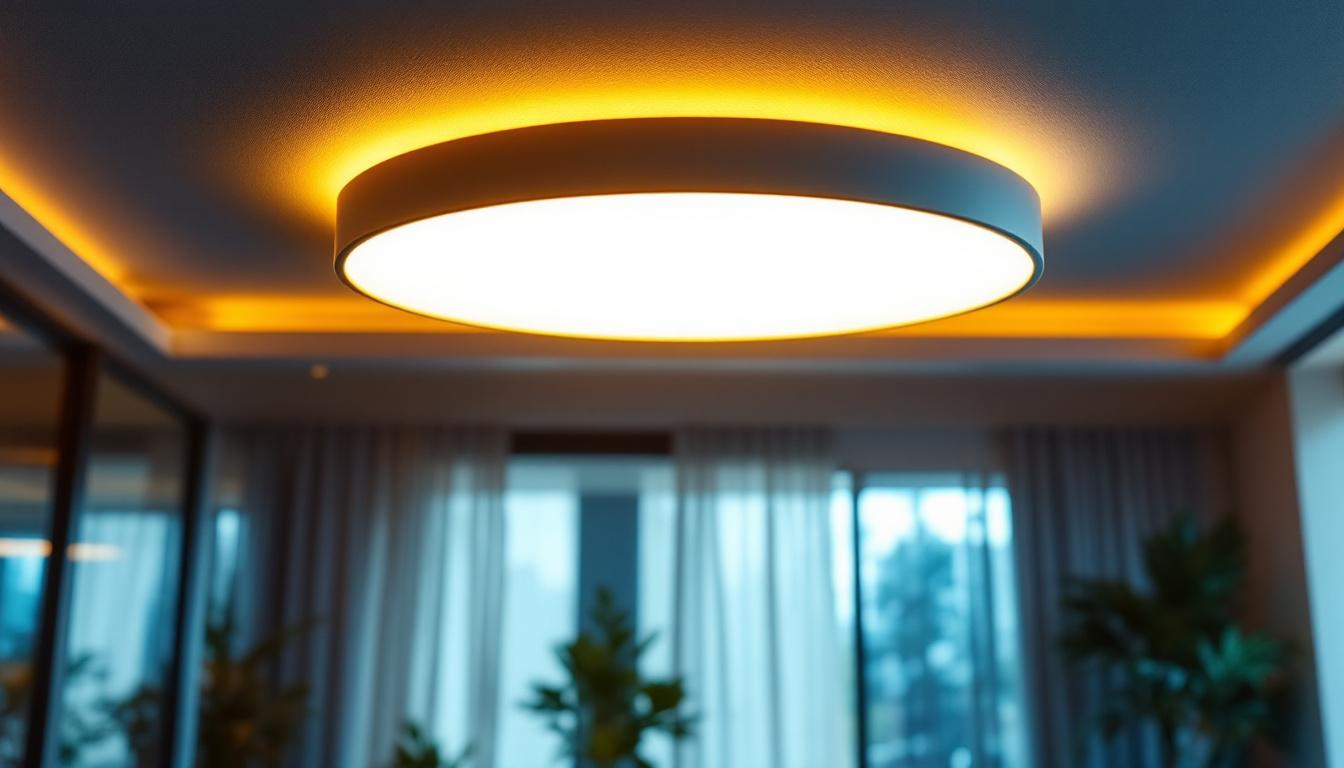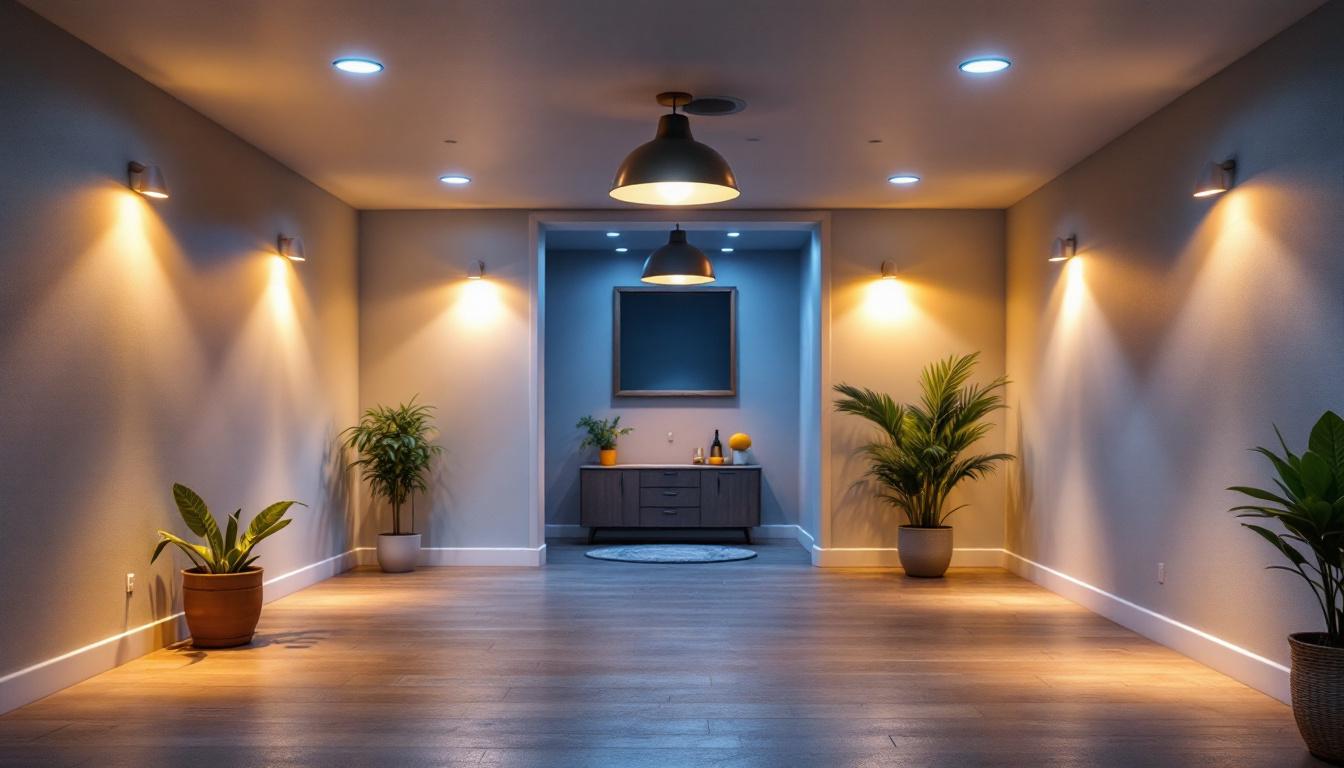
Lighting plays a crucial role in enhancing the aesthetic appeal and functionality of any space. Among the various lighting solutions available, ceiling uplight fixtures have emerged as a popular choice for both residential and commercial applications. For lighting contractors, understanding the benefits of these fixtures can help in making informed recommendations to clients and ultimately lead to successful project outcomes. This article explores the top benefits of ceiling uplight fixtures and how they can enhance the work of lighting contractors.
Ceiling uplight fixtures are designed to direct light upward, illuminating the ceiling and creating a sense of spaciousness and warmth in a room. Unlike traditional downlights that focus light downward, uplights provide a soft, diffused glow that can dramatically alter the ambiance of a space. These fixtures come in various styles, sizes, and designs, making them versatile for different applications.
In addition to their aesthetic appeal, ceiling uplight fixtures can also serve functional purposes, such as improving visibility and enhancing architectural features. For lighting contractors, being knowledgeable about these fixtures can facilitate better design choices and client satisfaction.
One of the key benefits of ceiling uplight fixtures is their ability to create an illusion of height in a room. By casting light onto the ceiling, they draw the eye upward, making even lower ceilings feel more expansive. This effect can be particularly beneficial in smaller spaces, such as apartments or cozy living rooms, where maximizing the perception of space is crucial. Additionally, when combined with other lighting sources, uplights can create layered lighting effects that add depth and dimension to a room, enhancing its overall design.
Moreover, ceiling uplight fixtures can be strategically placed to highlight specific architectural features, such as crown molding, beams, or artwork. This not only adds visual interest but also helps to create focal points within the space. With the advancement of LED technology, many uplight fixtures are now energy-efficient and can be dimmed or controlled via smart home systems, allowing for customizable lighting scenarios that adapt to different moods and occasions. As such, understanding the various options and applications of ceiling uplight fixtures can empower homeowners and designers alike to create truly stunning environments.
One of the primary advantages of ceiling uplight fixtures is their ability to enhance the visual appeal of a space. By casting light upwards, these fixtures create a warm and inviting atmosphere that can make any room feel more spacious and comfortable. The indirect lighting produced by uplights can soften harsh shadows and reduce glare, resulting in a more pleasant environment.
Moreover, ceiling uplights can highlight architectural features such as vaulted ceilings, crown moldings, and decorative elements. This ability to draw attention to specific areas can significantly elevate the overall design of a room, making it an attractive option for contractors looking to impress clients. The interplay of light and shadow can also create a dynamic visual experience, where the changing light throughout the day enhances the beauty of the space, making it feel alive and ever-changing.
Additionally, ceiling uplights come in a variety of styles and finishes, allowing homeowners and designers to select fixtures that complement their existing décor. From sleek modern designs to ornate traditional styles, these fixtures can seamlessly integrate into any interior theme, further enhancing the aesthetic appeal of the environment. The choice of color temperature can also influence mood; warmer tones can evoke a sense of comfort, while cooler tones can promote alertness and focus, making the selection process an essential part of the design strategy.
Ceiling uplight fixtures can dramatically alter the perception of space within a room. By illuminating the ceiling, these fixtures create an illusion of height, making rooms appear larger and more open. This is particularly beneficial in smaller spaces where maximizing perceived square footage is essential.
Lighting contractors can leverage this benefit when working on projects involving compact areas, such as apartments or offices. By integrating uplight fixtures into the design, contractors can provide clients with a solution that not only meets their lighting needs but also enhances the overall functionality of the space. The strategic placement of uplights can also help to delineate different areas within an open floor plan, guiding the eye and creating a sense of organization without the need for physical barriers.
Furthermore, the upward lighting can contribute to a more balanced illumination throughout the room, reducing the need for multiple light sources. This not only simplifies the lighting design but also minimizes energy consumption, making it an eco-friendly choice for those looking to reduce their carbon footprint. The result is a harmonious blend of form and function, where the lighting enhances the usability of the space while maintaining an aesthetically pleasing environment.
Ceiling uplight fixtures are incredibly versatile and can be used in a variety of settings, ranging from residential homes to commercial establishments. In living rooms, they can create a cozy atmosphere for relaxation, while in offices, they can contribute to a more productive work environment by providing even, diffused lighting.
In addition, these fixtures can be used in hospitality settings such as hotels and restaurants, where ambiance is key to guest satisfaction. By offering a range of uplight options, lighting contractors can cater to diverse client needs and preferences, ensuring that each project is tailored to its specific context. The flexibility of uplight fixtures allows for creative installations, such as using them in conjunction with wall-mounted art or sculptures, thereby enhancing the overall visual narrative of the space.
Moreover, ceiling uplights can be integrated with smart home technology, allowing users to control the brightness and color temperature through mobile apps or voice commands. This adaptability not only enhances user experience but also aligns with modern trends in home automation. As more clients seek personalized and technologically advanced solutions, the ability to customize lighting settings can significantly increase the appeal of uplight fixtures in both residential and commercial projects.
In an era where energy efficiency is paramount, ceiling uplight fixtures often utilize LED technology, which consumes significantly less energy compared to traditional incandescent or fluorescent lighting. This reduction in energy consumption not only lowers utility bills for clients but also contributes to a more sustainable approach to lighting design.
Lighting contractors can promote these energy-efficient options to clients who prioritize sustainability. By highlighting the long-term cost savings associated with LED uplights, contractors can position themselves as knowledgeable professionals who understand the importance of eco-friendly solutions.
Another advantage of LED ceiling uplight fixtures is their longevity. LED lights typically have a lifespan of 25,000 to 50,000 hours, significantly outlasting traditional bulbs. This durability translates to fewer replacements and reduced maintenance efforts for clients, making it an appealing option for contractors to recommend.
By emphasizing the low maintenance aspect of ceiling uplight fixtures, contractors can alleviate client concerns regarding ongoing upkeep and replacement costs. This can lead to increased client satisfaction and a stronger reputation for providing reliable lighting solutions.
Ceiling uplight fixtures can be an integral part of a layered lighting design, which combines ambient, task, and accent lighting to create a well-balanced and functional space. By incorporating uplights into a lighting scheme, contractors can enhance the overall effect and provide clients with a more versatile lighting solution.
For instance, combining uplights with downlights and wall sconces can create a dynamic atmosphere that caters to various activities, from entertaining guests to focusing on work tasks. This flexibility allows contractors to tailor lighting solutions to meet the specific needs of each client, ensuring satisfaction and functionality.
Ceiling uplight fixtures come in a wide range of styles, colors, and finishes, allowing for extensive customization. Contractors can choose fixtures that align with the overall design aesthetic of a space, whether it be modern, traditional, or eclectic. This ability to customize not only enhances the visual appeal but also allows contractors to cater to the unique tastes of their clients.
Furthermore, many uplight fixtures offer adjustable features, such as dimming capabilities and color temperature options. This adaptability enables contractors to create personalized lighting experiences that can change according to the time of day or specific activities, further enhancing client satisfaction.
When installing ceiling uplight fixtures, proper placement is crucial to achieving the desired lighting effect. Contractors should consider factors such as ceiling height, room size, and the intended use of the space. In general, uplights should be positioned to effectively illuminate the ceiling while avoiding direct glare for occupants.
Additionally, contractors should take into account the layout of the room and any architectural features that may influence the light distribution. By carefully planning the placement of uplights, contractors can ensure optimal performance and aesthetic appeal.
Installing ceiling uplight fixtures may require specific wiring and electrical considerations, especially if retrofitting existing spaces. Contractors should be well-versed in local building codes and regulations to ensure a safe and compliant installation.
Furthermore, it’s essential to consider the electrical load and circuit capacity when integrating uplights into a lighting design. Proper planning and execution will result in a successful installation that meets both safety standards and client expectations.
For lighting contractors, educating clients about the benefits of ceiling uplight fixtures is essential for successful project outcomes. Providing demonstrations or visual aids can help clients understand how uplights can transform their spaces and enhance their overall experience.
By showcasing the various applications and design possibilities of uplight fixtures, contractors can engage clients in meaningful discussions and foster a collaborative approach to lighting design. This engagement not only builds trust but also empowers clients to make informed decisions about their lighting choices.
Clients may have concerns regarding the effectiveness, cost, or maintenance of ceiling uplight fixtures. Addressing these concerns with clear and concise information can help alleviate any apprehensions. By being transparent about the benefits, costs, and maintenance requirements, contractors can build credibility and strengthen client relationships.
Moreover, offering post-installation support and guidance can further enhance client satisfaction. Providing resources or tips for optimizing the use of uplights can leave a lasting impression and encourage clients to refer contractors to others.
Ceiling uplight fixtures offer a multitude of benefits for lighting contractors, from enhancing aesthetics and improving space perception to promoting energy efficiency and sustainability. By incorporating these fixtures into their designs, contractors can create dynamic lighting solutions that cater to diverse client needs.
Understanding the key advantages of ceiling uplights, as well as the considerations for installation and client engagement, can empower lighting contractors to deliver exceptional results. As the demand for innovative and efficient lighting solutions continues to grow, ceiling uplight fixtures will undoubtedly remain a valuable asset in the lighting contractor’s toolkit.
Ready to elevate your lighting projects with the premium quality and value that LumenWholesale offers? Our extensive selection of spec-grade ceiling uplight fixtures is designed to meet the highest industry standards, ensuring you deliver exceptional results every time. Say goodbye to inflated markups and hello to unbeatable wholesale prices, with the convenience of free shipping on bulk orders. Don’t compromise on quality or cost. Choose LumenWholesale for your lighting needs and experience the perfect blend of aesthetics, efficiency, and value. Wholesale Lighting at the Best Value is just a click away.

Discover how integrating solar panels into lamp installations can boost profitability while promoting sustainability.

Discover essential facts about F14W-T5-835 lighting for contractors, including benefits, specifications, and industry insights to optimize your projects—boost efficiency today!.

Discover essential tips and strategies for lighting contractors to prevent common pitfalls when installing LED hanging lanterns.

Discover essential tips and strategies for lighting contractors to effectively illuminate unfinished basements.